I spoke about Vueling a couple of weeks ago, explaining their strategy in Florence and how can they be the largest airline in that key market.
Having to return from Catania after flying ITA, opportunity knocked to return home with them via Florence, since it’s way closer to the city I live in (Siena) than Pisa or, for that matter, than any other airport.
Their fare was quite good – EUR54.49 for a last-minute trip – and there I went. Although I don’t really like Vueling’s website as it still has that early 2010s vibe, it was quite functional.

Their app, however, is very good; although you’d expect an IAG company to have a nicer-looking website than that. If only they heard more from their customers, I’m sure they’d come up with something better looking.
I mean, come on: even ITA had a better website, and that’s because they had months to gear themselves up.
VLG6865 CTA-FLR
After arriving in Catania with ITA (read the report clicking here), I had an hour and a half to spare. The terminal was not as nearly as full as I saw in Summer, but still that place was crowded.
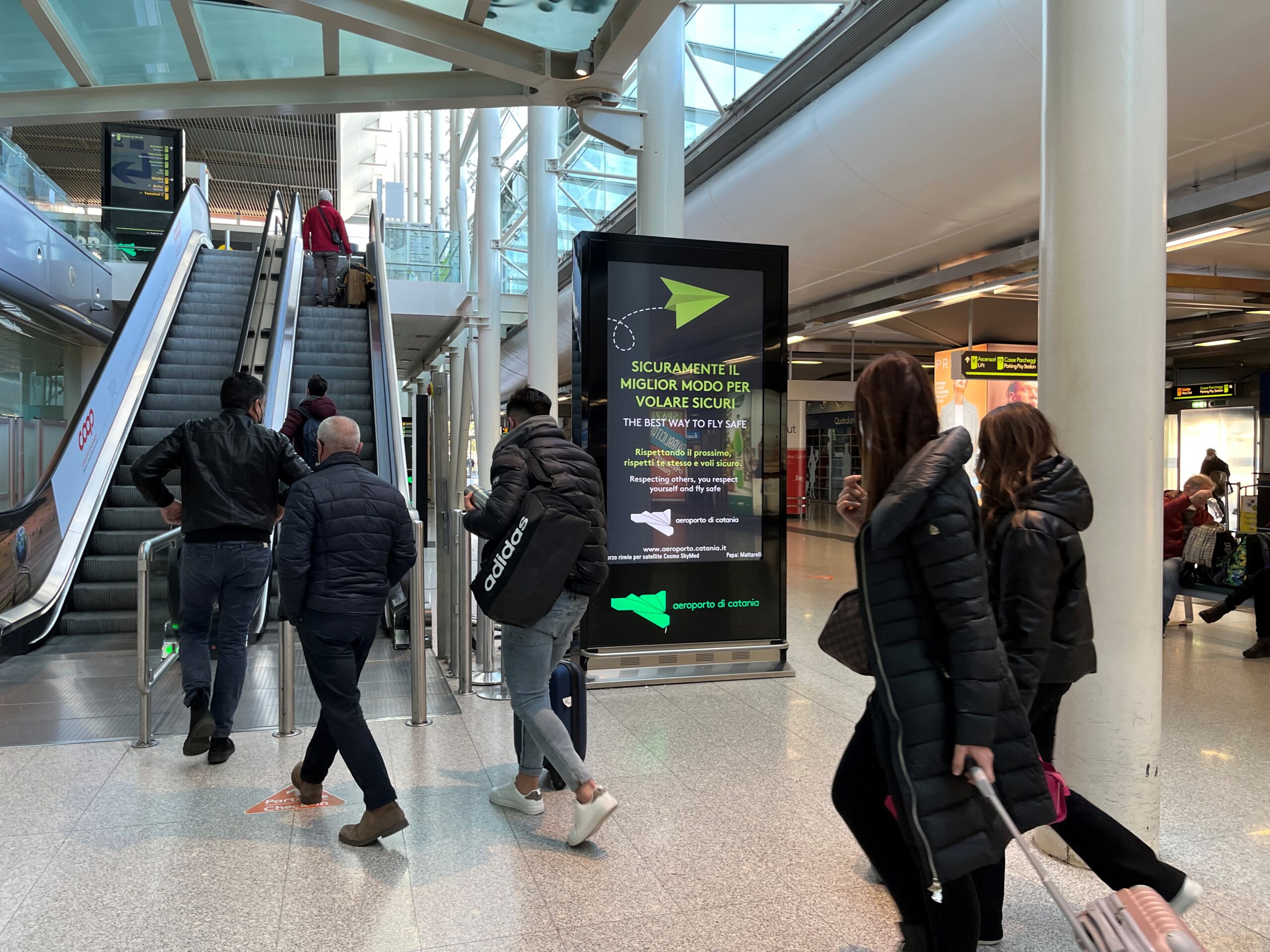
The structure might be good, but there is a clear lack of physical space for the terminal operator to work on; this makes Catania’s airport one of my least favorites in Italy.
The line for security checks didn’t take too long though, so in a few moments I was on the airside, still in time to recharge my phone; my plane was already on the gate.
Although in front of the gate there was a considerable line already forming, the plane still had to be unloaded.
But we were on for an on-time departure, nevertheless. The flight seemed quite empty and we’d board via a boarding bridge. Hooray!
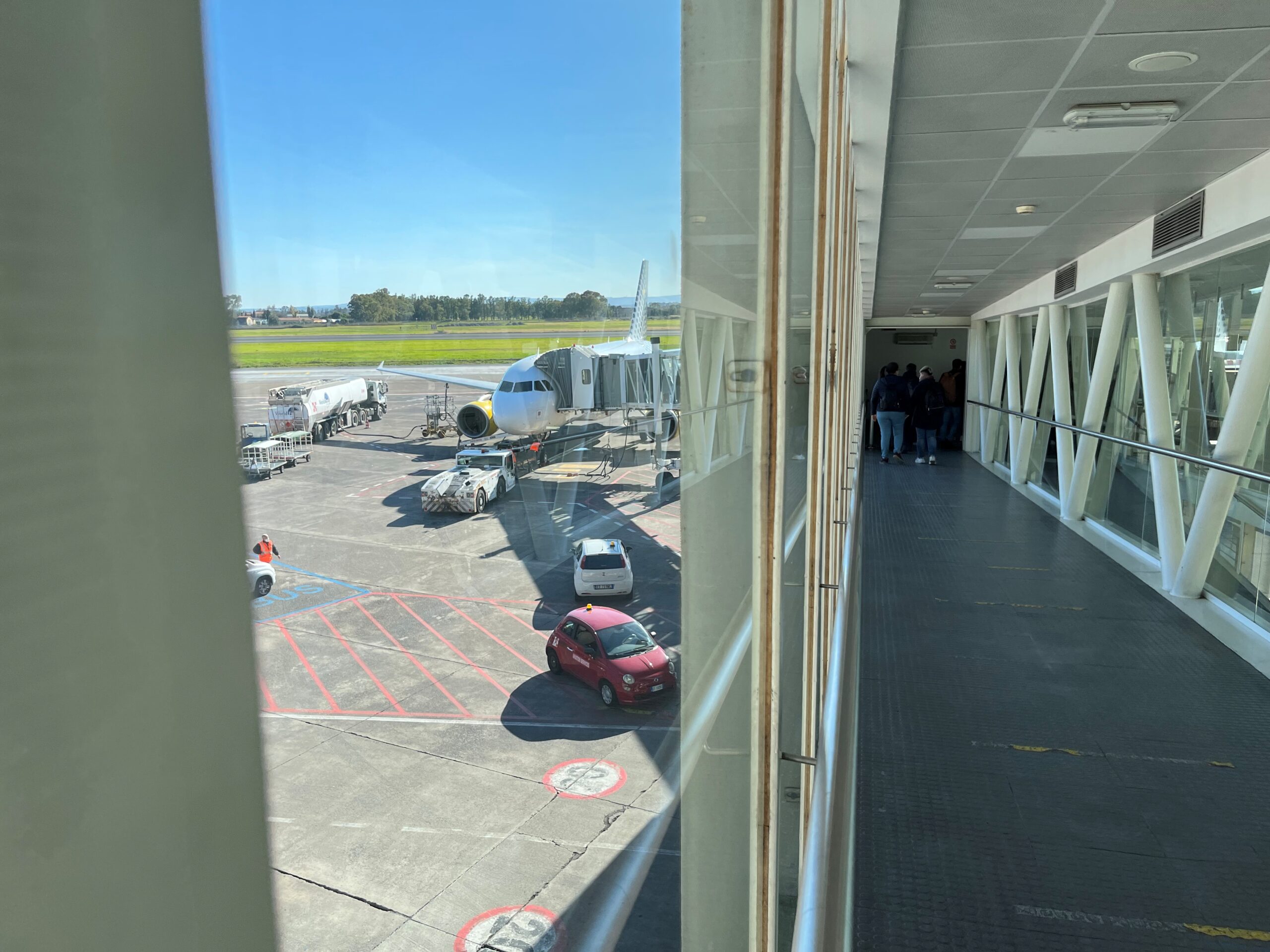
Our ride for the day was EC-MIQ. A true IAG road warrior, sn 3169 was originally delivered to Iberia as EC-KEV in June 2007, sporting a sticker about the Urogallo, an endangered Spanish bird. Back then, IAG didn’t even exist; in April of the same year the Group was formed, it was returned to the lessor.
In July, the plane was reregirested as EI-EPR and started its flights for Aer Lingus, where it was named «St. Davnet». Funnily enough, Aer Lingus didn’t belong to IAG when Papa Romeo started flying for the company, not until 2015, when it was retired from service.
EPR was then reregistered EC-MIQ, starting to fly for Vueling in December. Data was gathered from Airfleets.
From the outside, this machine looked good.
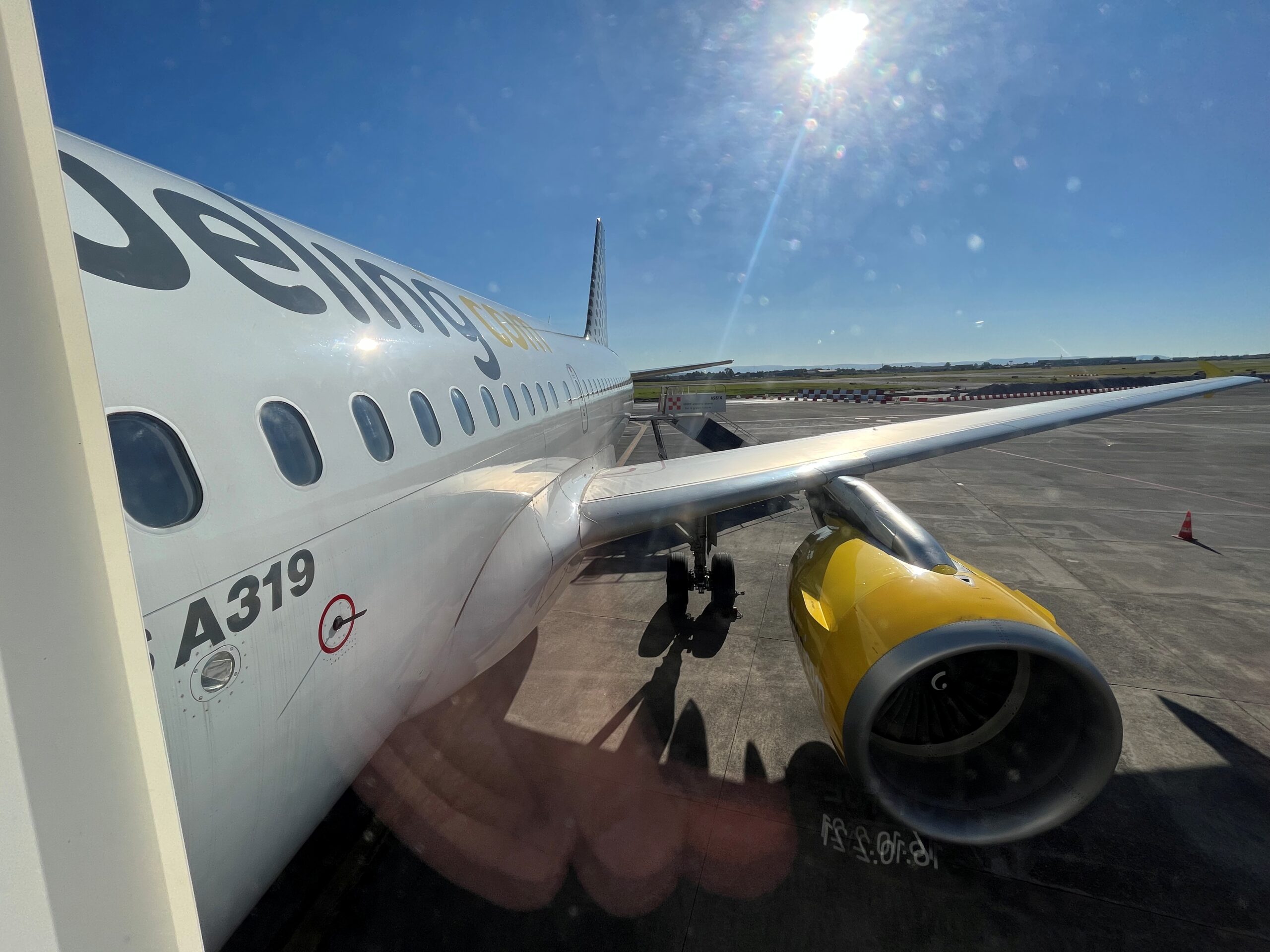
And a nice surprise at the door; Vueling offers wifi onboard. If I’m not mistaken they are they only European LCC to do so, with the exception of Norwegian, which given their lately reduced network, I don’t expect to fly anytime soon, unfortunately.
And it seems that Vueling is also integrated to IAG’s Avios program, which is a bonus if you’re a points loonie.
The cabin looked super nice.
Obviously the seats are crap, but that’s just short-haul Europe for you. It’s not like the glorious Lufthansa does any better in their A319s either.
I had been assigned a window seat, but as the row behind me was empty, I jumped there. The load was quite light — I estimate the load factor was around 50 or 60%.
Which is why we eventually left on time; pushback was started at 14h37.
A short taxi to Catania’s runway 08 followed and, after waiting for a Wizz A320 to land, at 14h49 EC-MIQ launched out with ease.
Then we did a right turn, and the view of the Etna was beautiful.
My phone battery was starting to die and, much to my surprise, Vueling offers USB plugs under the seats. I’d forgotten to buy an USB adapter to my new phone, so I had to recharge it using my laptop’s power. My bad, but again that’s something other LCCs don’t offer in Europe – and it’s a really welcome feature by the way.
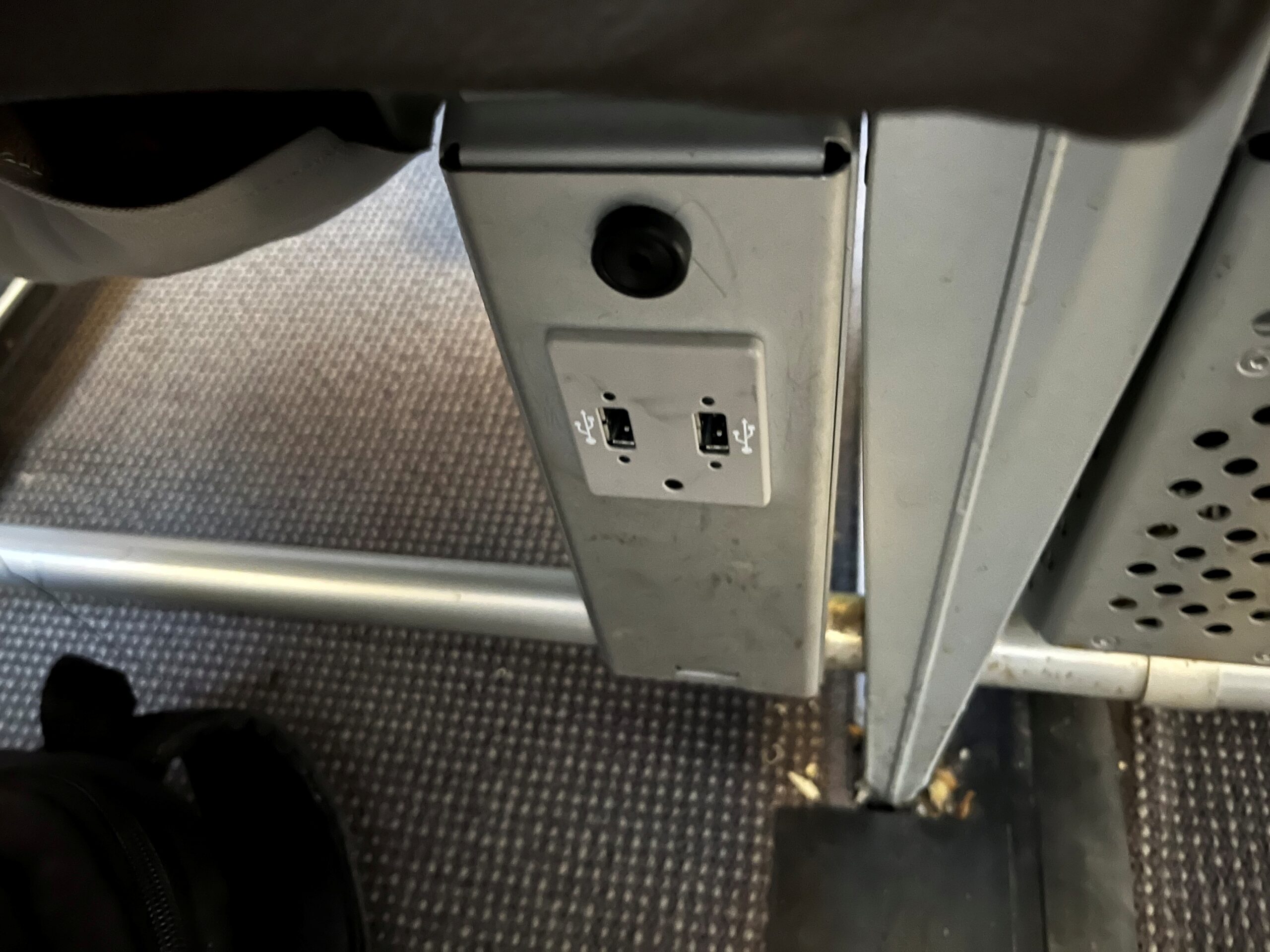
Another very welcome feature, as I mentioned before, was the wi-fi. Prices were quite competitive, just over EUR5 for the full flight at streaming speeds, so I bought it.
However, for half of the flight (perhaps because we were away from the shore) the internet didn’t work at all, so it felt like a scam. Yes, the price was good, but what’s the use if there is no connection most of the time?

Soon catering service was also started. The menu was available only physically and it looked quite diverse. Pretty good if you ask me.
So I ordered a can of Coke and their «Ibérico» hot sandwich. In some minutes I had my order in hands.
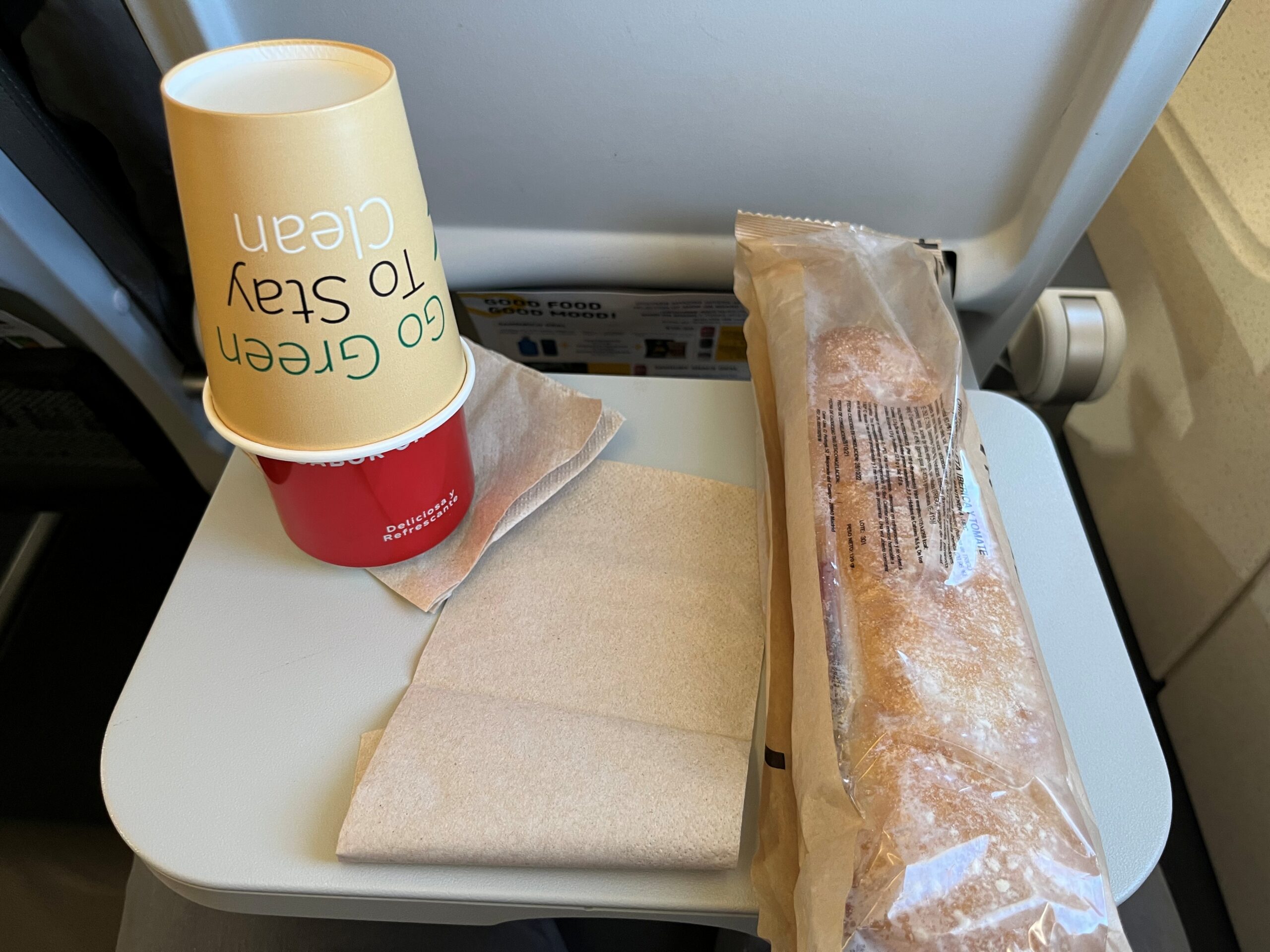
The sandwich was really hot (well done) but it lacked filling. The taste, nevertheless, was really good.

So I took the fact that my row was empty and internet wasn’t working to take a walk to the lavatory. Despite the quick turnaround in Catania, it was kept clean. Other than that, it’s your average Airbus A320 lavatory.

I really liked the aspect of the cabin; a fun thing is that it reminded me of the Itapemirim story back in Brazil. One of ITA’s first aircraft was previously operated by Vueling, which meant that the company’s cabin that promised to «bring back the old days» had that shambles of a cabin, with slimline seats that didn’t recline.
For a low-cost carrier, though, this cabin is very good, and in the times wi-fi worked, it was quite fast. The only problem I noticed was the remarkably small tray table.

And I like Vueling’s branding work; it’s funny and simple without looking like that monstrous millenial-pandering job like Air France-KLM tried with the late Joon, for example.
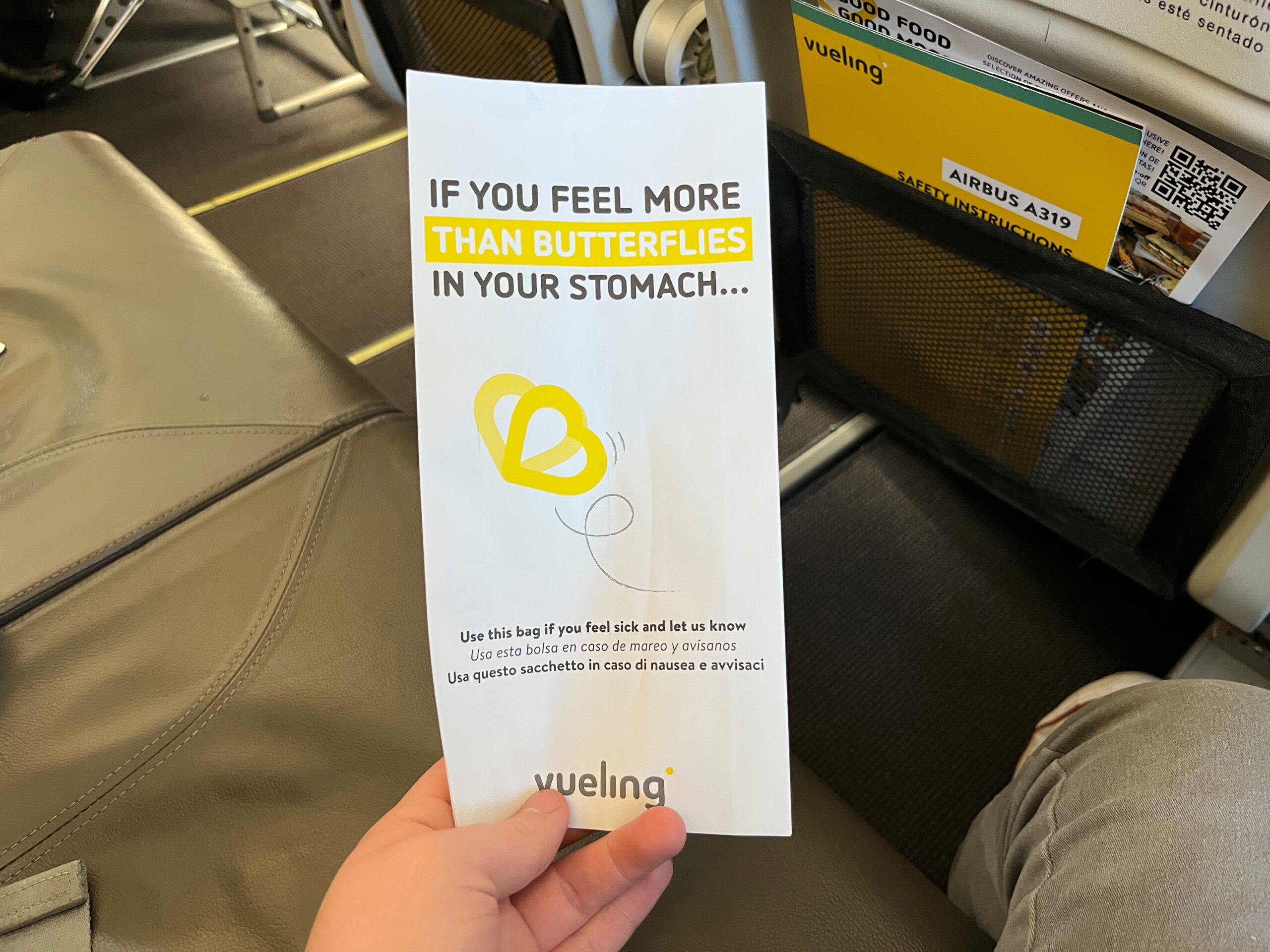
I appreciate the FA’s effort of bringing me the food after the service was ended, as I ordered it afterwards. Other then that, they seemed very kind to everyone, so that’s a plus for Vueling.
But domestic flights in Italy are relatively short, and soon EC-MIQ started its descent into Florence Airport.

Weather was quite cloudy and descent was a little shaky; nevertheless, at 16h16 we performed a relatively smooth landing in Peretola Airport’s runway 05, followed by some heavy braking, given the airfield’s short runway lenght.
Landing was performed four minutes before schedule; we must have gotten some bad headwinds, for the flight took more than the longer Milan-Catania I did that day.
Anyway, taxi was short and, as always in Florence, we parked in a remote position. It’s good I was in one of the seats at the back, because with the current deboarding system, mine was one of the firsts to be called for leaving the aircraft.
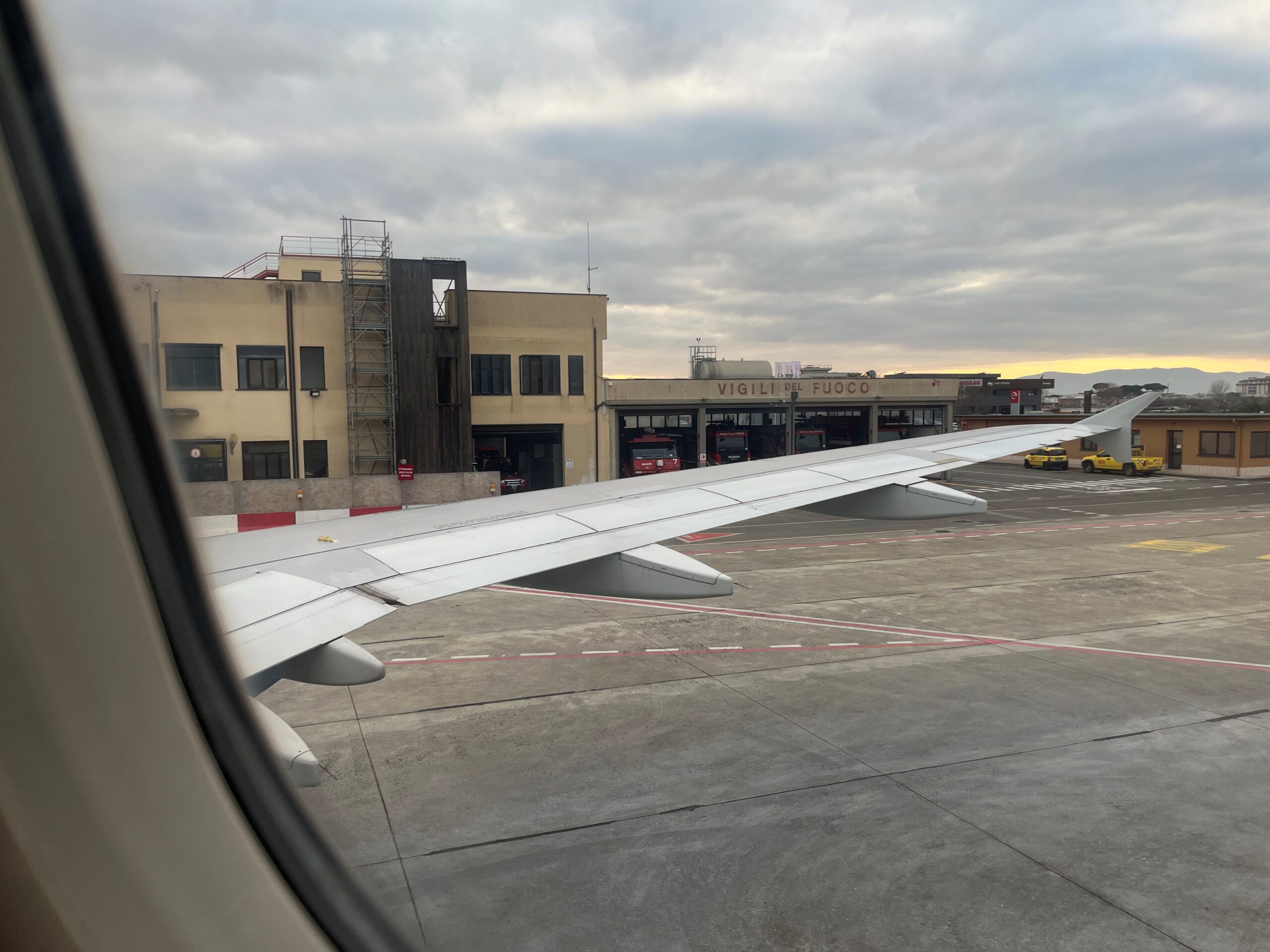
This brand is really cool; it’s not for nothing that it’s been the same since the airline’s inception in 2004, surviving even the IAG takeover. This page shows the case study for Vueling’s branding.

I waved goodbye to EC-MIQ (it was a cold afternoon) and found my way into the bus, which was not as packed as early that day in Milan and Catania.

Florence’s terminal is really good; it’s small, yes, but for a central airport it does its job. Not for nothing, it took me less than a minute, after I got off the bus, to be outside the building, heading to the tram station that would take me to the central station.
The tram ticket is relatively cheap (EUR1.50) and gives you a 90 minute pass in any of Florence’s city bus lines, in case you need to connect to somewhere else.
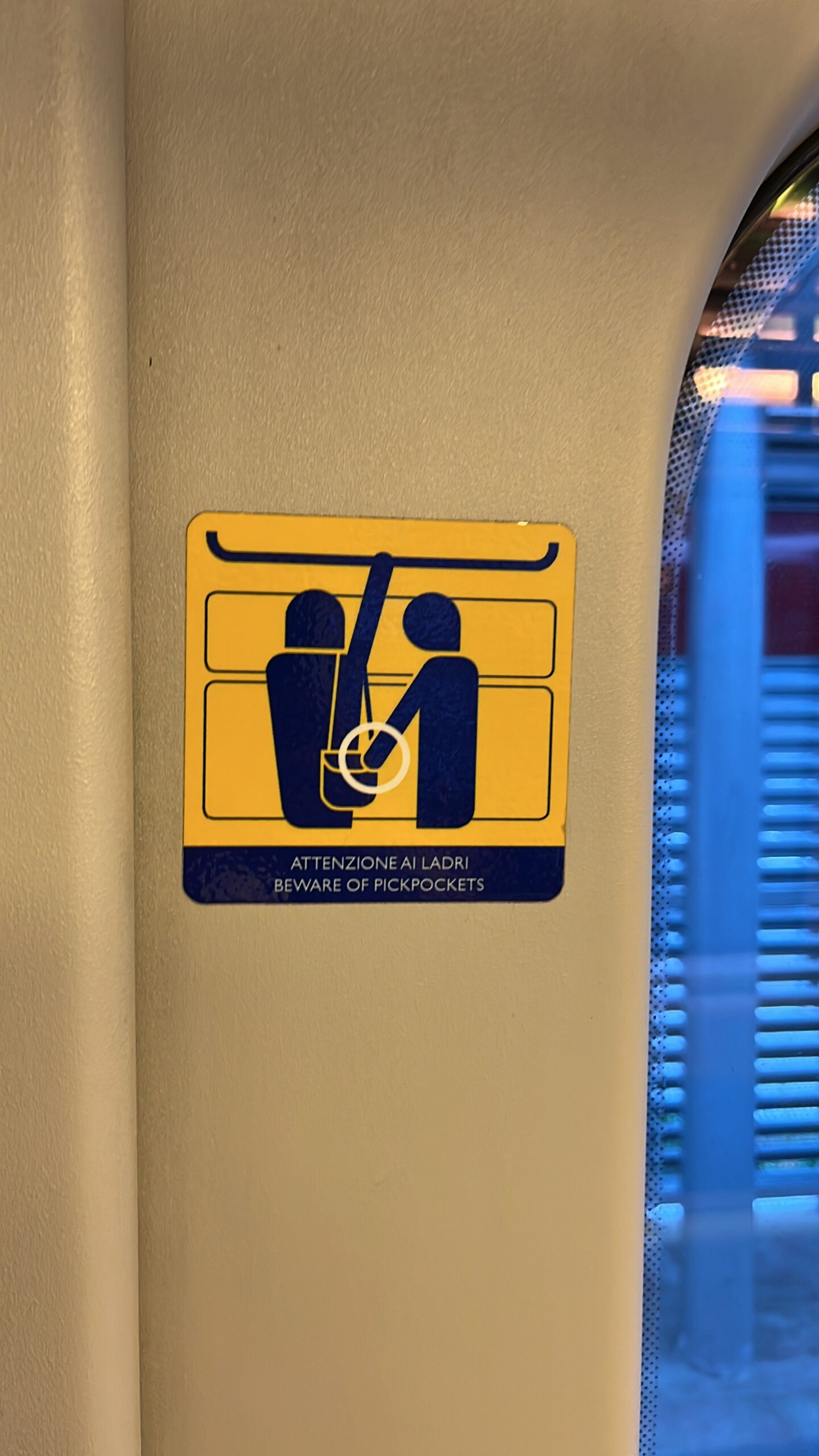
In about 20 minutes I was in Santa Maria Novella station, where my train awaited for an on-time departure back home. Another reason why I love living in Europe.
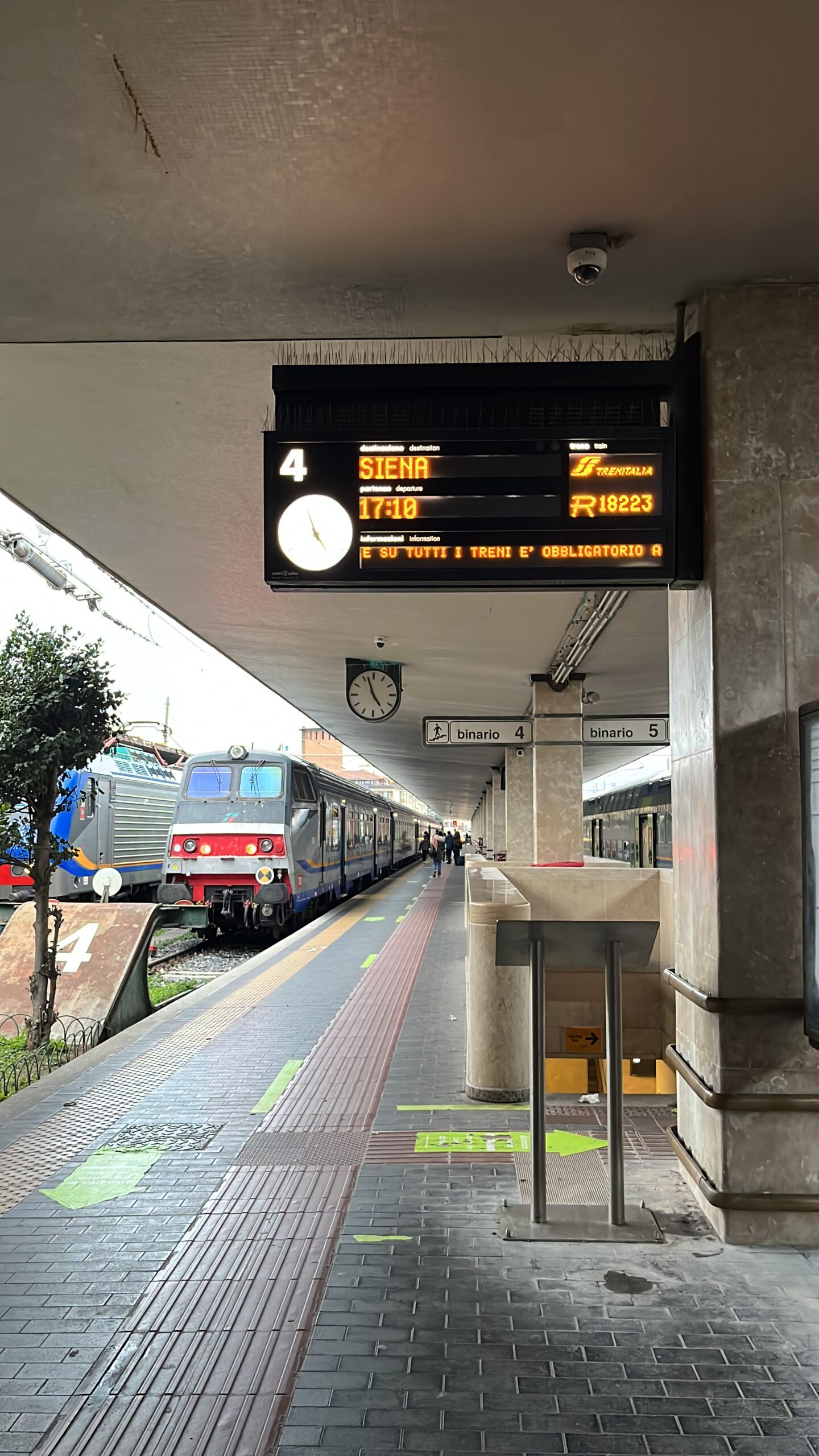
Final Remarks
I got my tickets with Vueling without knowing what to expect. Over the last two years I’d been waiting for the opportunity to try them out, and now I’m glad I did.
As the only low-cost carrier in Florence, the airline is generally the cheapest to fly from there, which doesn’t say much when you’re competing with the likes of British Airways and Lufthansa; still, their network from the city is quite comprehensive, so I hope I can fly more with them in the future.
If you have no problem flying LCCs, I’d say they are a great one at that. Booking process was easy (despite the crap website), the app worked great and flight was on-time. The crew was also a high point, and the catering service was almost perfect – albeit more expensive than I see with Ryanair.
The cabin and seat were standard for a low-cost carrier as well, albeit the small tray table, and another great aspect of Vueling is its integration with the other IAG airlines, which means they sell tickets jointly with Aer Lingus, British Airways, Iberia and LEVEL.
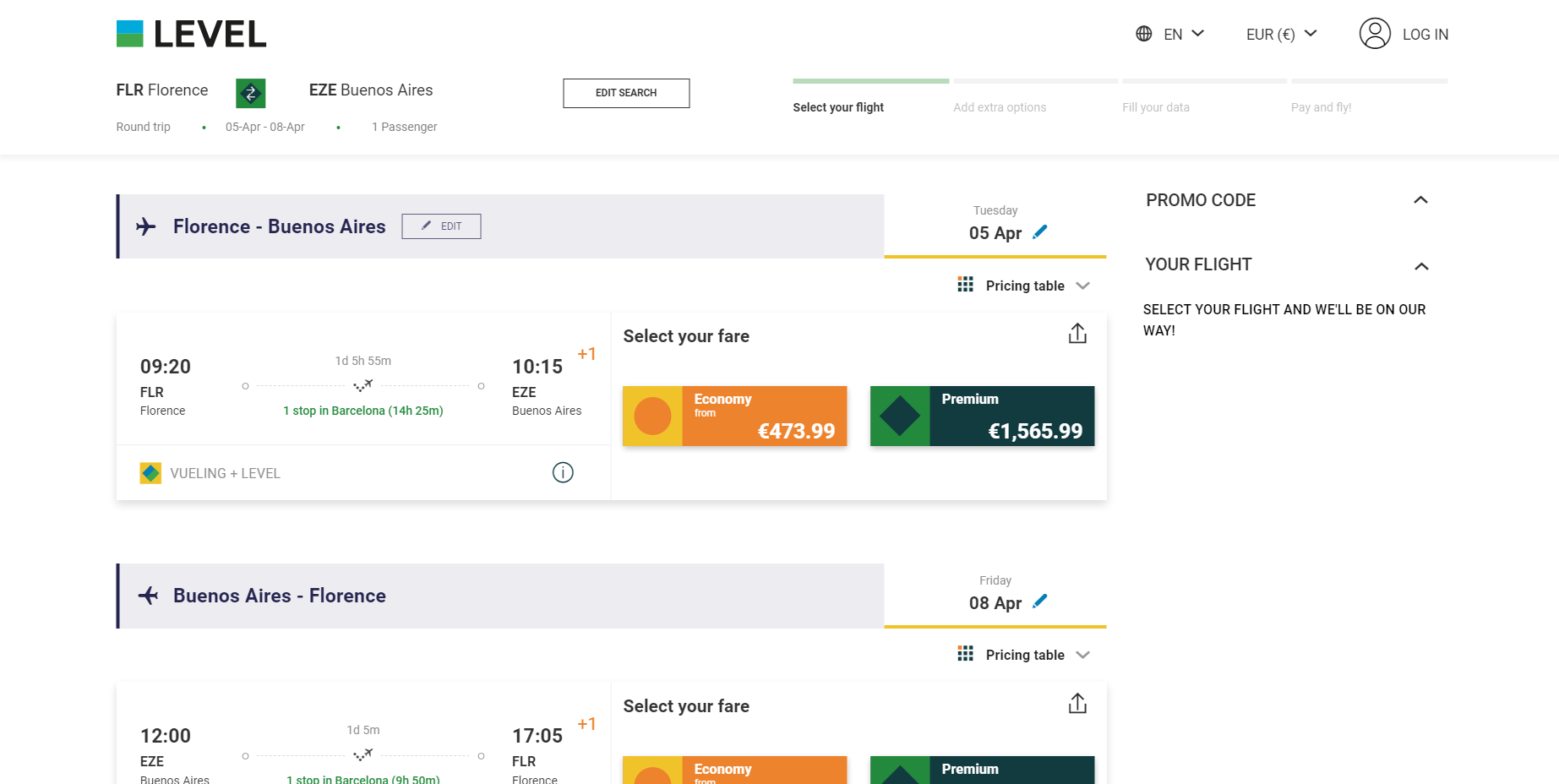
So would I reccomend Vueling? Absolutely. Next time I book with an IAG company and a Vueling fare appears (unless I’m flying Business class, and I usually don’t), I’ll definitely go for it.












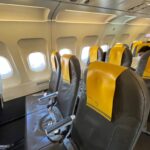







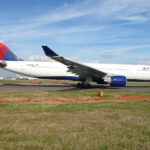
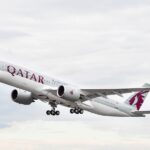




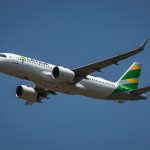



Talking about wifi on board – «The service will automatically be activated when the plane reaches 10,000 feet and will be deactivated before landing.» So, in your case it was briefly for 30 min connected.